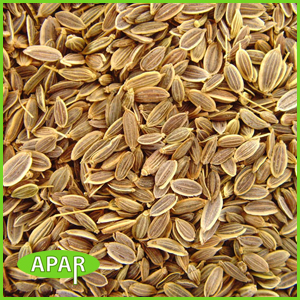DILL SEED
Dill is a tall, feathery annual, Anethum graveolens, in the parsley family. Both Dill Seed and Weed (dried leaves) come from the same plant. Dill Seed and Weed are widely used in pickling as well as in German, Russian, and Scandinavian dishes. The Dill Seed flavor is clean, pungent, and reminiscent of caraway. Dill Weed has a similar but mellower and fresher flavor. Dill is indigenous to the Mediterranean area and southern Russia. It has been used since ancient times. Although native to the Mediterranean region, it became a staple in northern Europe where it is still popular. In fact, the name is derived from the old Norse word “dilla” meaning “to lull” because it was used to lull babies to sleep, and as an antidote to witchcraft and sorcery. Dill Seed is good sprinkled over casseroles before baking and used in salad dressings. It has a camphorous, slightly bitter flavor. Dill seeds are the dried, ripe, light brown seeds with an aromatic flavor of the herbaceous annual pant. Dill seed is oval shaped, soft and fluffy. The leaves have pleasant aromatic odor and warm taste. Both seeds and leaves are valued as spice. Whole dill seeds have a somewhat sweet aroma but are slightly bitter in taste. The seeds contain carvone as an essential oil. Dill is considered a carminative.
Dill seed is used both whole and ground as a condiment in soups, salads, processed meats, sausages and pickling. The essential oil is used in water is the manufacture of soaps. Both seeds and oil are used in indigenous medicinal preparations. The emulsion of dill oil in water is an aromatic carminative and is extensively used for making gripe water for infants.

